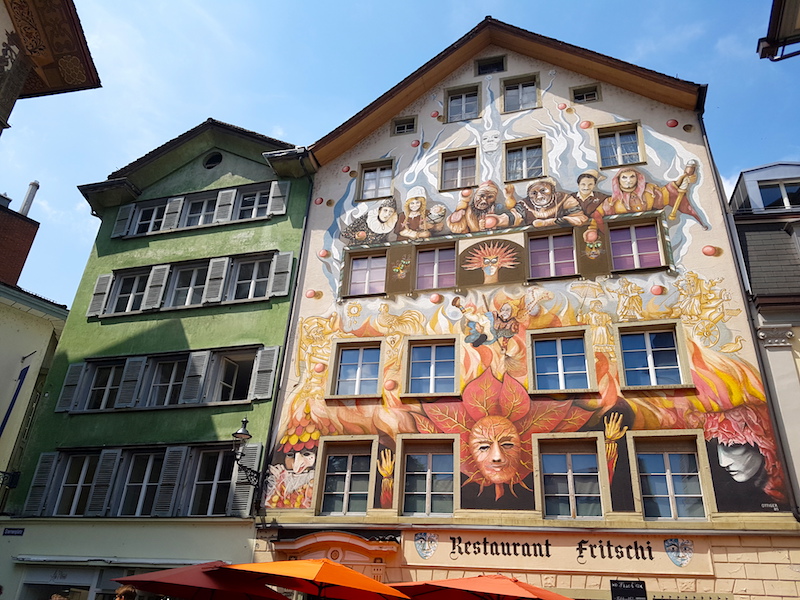
In a country that has so many enticing blockbuster attractions, Chur seems like a curious choice of a place to visit on a whirlwind tour. But there is a reason for my choice; Chur (pronounced Kh-oor) is not just one of Switzerland’s classic beauties but also the country’s oldest city, continually inhabited since 3000 BCE. In fact, archaeological evidence in the form of tools suggests that it was first settled in during the Stone Age, that is some time around 11,000 BCE.

In fact, in the couple of days that I spend exploring its narrow lanes and exquisite churches, it is a mystery to me as to how this town has remained hidden away from curious touristy eyes for so long. But mine not to reason why; I am just grateful to have at least one pretty Swiss town to myself without the touristy hordes photobombing every frame.
The capital of the Graubünden (also known as Grisons) province in the eastern side of the country, Chur is nestled smugly at the base of the Alps. That is the first thing I notice as I step out of the railway station, the fact that the Alps surround the town, rising fiercely and dramatically in all directions. Throw into the mix old buildings painted in pastel colours and a jumble of crisscrossing alleys, and you can see why it does not take too long for Chur to work its allure on me.

The road out of the station leads straight into the heart of the old town, which is like many European cities, devoid of vehicular traffic. The best way to explore Chur is on foot, and that is what I do, on a walking tour with Hans Hürlimann, a local who regales us with stories about the city. From a viewpoint high up, we catch sight of lush green vineyards stretching out in the valley below, as far as the eye can see. At that point, I immediately make a mental note to ask about local wines at dinner.

It is a mild summer morning and everyone in Chur – locals and tourists alike – is out in the open, enjoying the fine weather. While the al fresco cafés are bursting at the seams with contented diners, bargain hunters have found their own deals at the dozens of boutiques and markets all over town. Meanwhile, the kids are all having a great time splashing about on the makeshift water fountains that have sprung up on the main streets in a nod to summer.


My favourite stop on the walk is the Cathedral of St Mary of the Assumption, simply known as the Chur Cathedral, whose rather plain exteriors give no clue to the riches it holds inside. Built between 1151 and 1282, and renovated extensively in the 19th century (with a more recent refurbishment in 2007), the cathedral is home to some stunning wall frescoes and stained glass windows. But the highlight is hidden away in a corner high above eye level, a secret that Hans lets us into with great pomp and show: the spectacular altar with a gilded wood triptych from the late 1400s.




One thought on “The curious case of Chur 1”